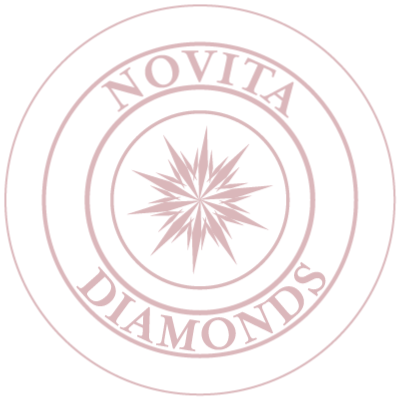BOOK AN APPOINTMENT


Lab Grown diamonds, also known as Lab Grown diamonds, Cultured diamonds, Above Earth diamonds, or Man Made diamonds, are diamonds that are grown in a laboratory and mimic the way that natural diamonds are formed below the earth’s surface.
Lab grown diamonds were first created by General Electric in the mid-1950s. Those diamonds were rough, gritty, low in aesthetic quality, and initially only purposed for various industrial applications. Since then, however, thanks to the astonishing advancements in HPHT (High-Pressure High-Temperature) and CVD (Chemical Vapour Deposition) technology, we now can grow some of the finest gem-quality stones perfect for special occasions.
However, the process is far from easy and the technology is very expensive.
So how are they grown? Just like much of the organic produce we see in our day to day lives, both methods, CVD and HPHT, start with a diamond seed. Putting these seeds through extreme conditions in a highly controlled environment, closely mimicking the environment beneath the earth’s crust, the end result is a stone that beautifully demonstrates the same chemical properties and qualities of any mined diamond found under the ground.
The first method, HPHT, takes place in a small capsule, capable to withstand extremely high temperatures with high pressure being applied from all sides, much like the pressure that occurs beneath the earth’s surface. Starting with a seed crystal, an organic pure-carbon substance is dropped through a molten metal flux, allowing it to attach to the crystal. This then gradually grows becoming a rough cub-octahedron-shaped stone.
In the CVD method, the diamond starts out on a seed plate, slowly growing from a carbon-rich gas. An energy source, much like a microwave beam, is shone through the high-temperature plasma-like gas cloud. This breaks down the molecules causing the carbon atoms to precipitate, falling onto the seed plate. Crystallization then begins and occurs over several weeks. The rough stones grow to exhibit a flat tabular shape with dark edges of graphite.
The lab process of creating a diamond is so similar to the earth’s naturally occurring phenomena, that just like earth-mined diamonds, no two lab-produced diamonds are alike. They are just as likely to contain naturally occurring inclusions and imperfections as diamonds that have been formed underground. It is for this reason that the grading of lab grown diamonds follows the exact same criteria as mined ones - the 4C’s.
Like natural diamonds, lab grown diamonds also fluctuate in size (carat weight). Again this is mainly due to the similarity of conditions that the lab diamonds are created in and unfortunately because it is just as difficult to create large diamonds in a lab as it is to find them naturally.
As with Colour, the range for lab grown stones is just as wide and varied as with mined ones; from D to M colour, Champagne to Brown, Yellow, Blue, etc. And in terms of Clarity, one could find all sorts of inclusions in a lab grown stone that gemmologists, jewellers, and diamond merchants have been accustomed to in earth mined diamonds for centuries.
Each and every lab grown stone must still be cut into that perfect diamond shape. It is the cut that we all know so well, which is guaranteed to be judged on perfection, polish, and symmetry regardless if it is from the lab or has been mined.
Unlike cheap diamond simulants, lab grown diamonds have the exact same scintillation, flash, fire, and brilliance as mined diamonds. The only significant difference between mined diamonds and man made diamonds is the origin of the diamond. Even the most experienced gemmologists cannot tell the difference between lab grown diamonds and mined diamonds.
One really important thing to know and remember about diamonds generally, mined or lab grown is where the real value of a diamond lies. Most people strongly believe that mined diamonds are super rare. This is not true. In fact, there is such an abundance of earth-mined diamonds that in the late 1880s they were essentially considered a semi-precious stone equivalent to today’s turquoise or topaz.
The over-supply at the time even led a couple of very rich and powerful people to orchestrate a huge monopolisation of the entire diamond industry; A price-fixing effort that had been referred to as “the most successful cartel arrangement in the annals of modern commerce” (The Atlantic, February 1982).
It is worth noting that whilst mining a diamond deposit is no cheap feat, especially when considering how much earth has to be dug up to retrieve them, the cost to produce one carat of an earth-mined diamond (from the ground to a ‘rough-in-hand’) is in fact roughly the same as the cost to produce a lab grown diamond (from seed to ‘rough-in-hand’).
A hugely significant part of a diamond’s value is in the post-grow production process. This process, starting from the discovery or growth of a rough stone includes the selection, sorting, cutting, polishing, grading, and certifying/laser inscription of the stone. This is what we refer to as the Rough to Retail part of the diamond’s life. This process is conducted in exactly the same way for both lab grown diamonds as well as mined diamonds, applying an equally high degree of integrity and workmanship, paying great attention to detail. All grading and certification performed on lab grown diamonds are held to the same strict standards as when grading and certifying mined stones, treating each stone uniquely, and assessing them all on an individual basis.